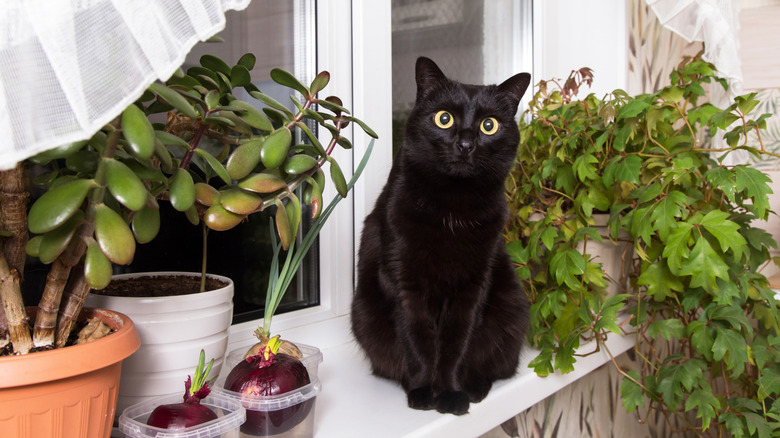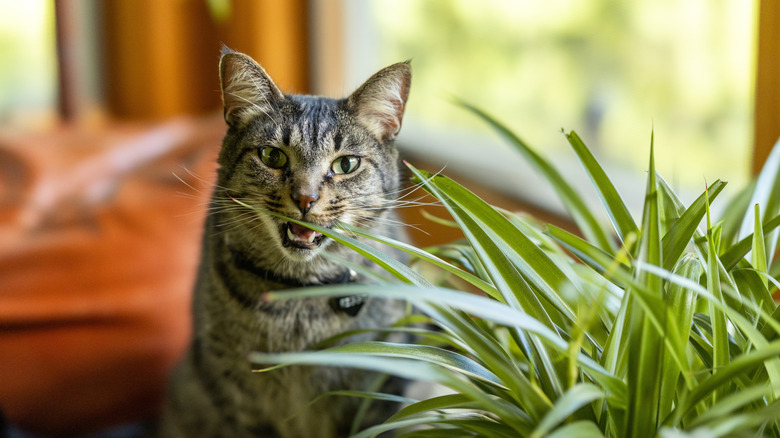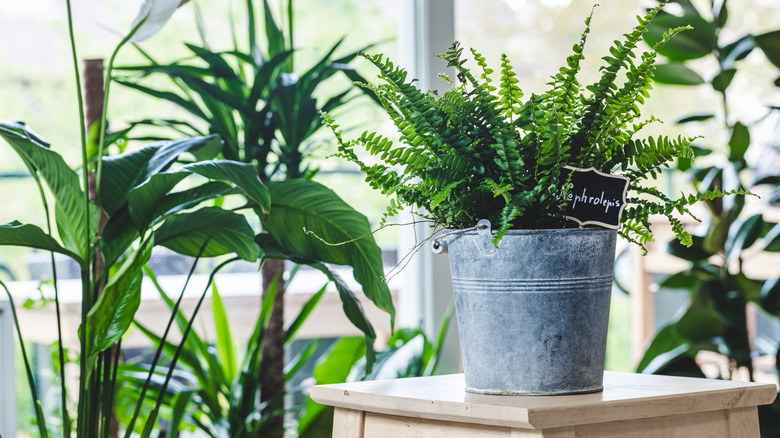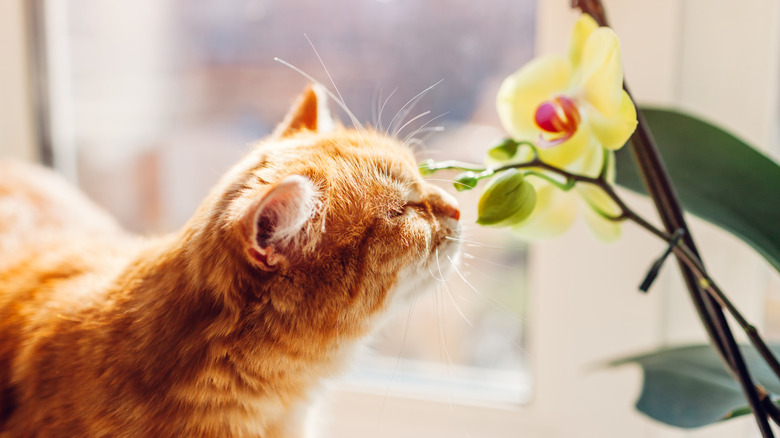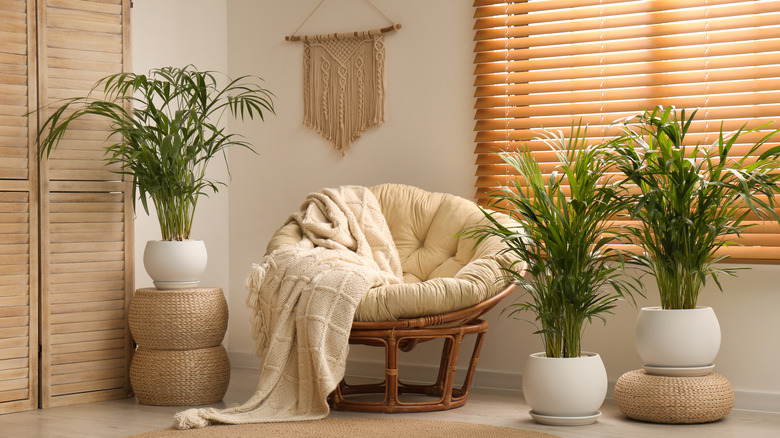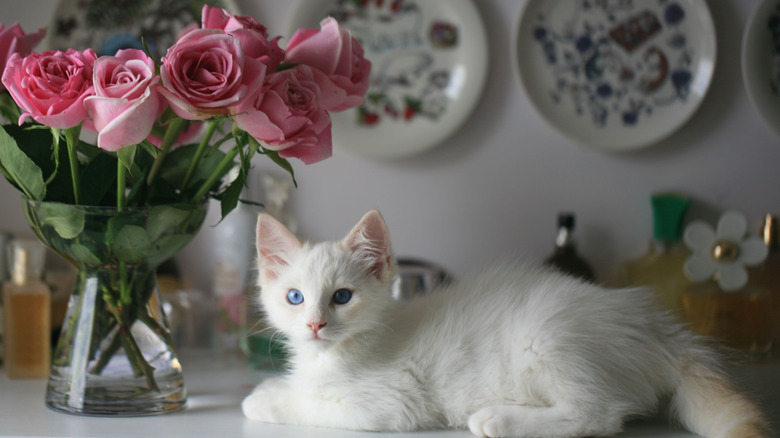5 Cat-Safe Houseplants To Freshen Up Your Space
Plant-related toxicities remain one of the most prevalent causes of emergency calls to pet poison control centers across the United States. This highlights a serious but often overlooked household safety concern. According to the ASPCA's Animal Poison Control Center, they fielded over 400,000 calls in 2023, with toxic plant exposures representing a substantial portion of these emergencies. This alarming figure underscores the hidden dangers that many common houseplants can be poisonous to cats, especially curious cats hell-bent on nibbling novel greenery.
For cat parents, the challenge of creating a vibrant, plant-filled home without compromising pet safety is all too real. Thankfully, you don't have to choose between greenery and your feline friend. There are a variety of cat-safe houseplants, including five stunning ones that are not only safe for cats but also easy to care for and visually captivating. You can keep your cat and your plants living in perfect harmony. However, if you suspect your pet has ingested potentially poisonous substances, it's always best to contact Animal Poison Control.
Spider plants are a classic houseplant
Meet your friendly neighborhood spider plant, a perennial favorite for plant enthusiasts. Known for its long, arching leaves and air-purifying qualities, this plant thrives in a variety of conditions, making it perfect for beginners. Plus, its cascading foliage adds a dynamic, elegant touch to any room. What truly sets the spider plant apart? Its resilience. Even if your fur baby manages to menace its leaves, this hardy plant can quickly bounce back, making it both beautiful and practical.
Beyond its visual appeal, recent studies have highlighted the spider plant's ecological benefits. It shows resistance to pests like the two-spotted spider mite. Additionally, its adaptability to various climates underscores its resilience, even in challenging urban settings.
Spider plants thrive best in bright, indirect light — though they can also handle low-light conditions — and should be watered only when the top inch of soil feels dry. Overwatering can lead to root rot, so it's essential to keep an eye on moisture levels. As is true for many plants, increased temperatures should be balanced with increased humidity. Finally, consider hanging baskets or elevated shelves to display these plants and keep them safely away from your feline friends. Additonally, these tips on getting your cat to stop eating household plants can keep them nibble-free.
Boston fern, clean green for humid spaces
Few plants can match the Boston fern when it comes to bringing lush greenery into your home. Moreover, it's former NASA researcher Bill Wolverton's top pick when it comes to indoor air purifying plants. With its feathery fronds and vibrant green hue, this plant adds a soothing, verdant vibe to any room. It's especially well-suited for humid areas like bathrooms or kitchens, where it can thrive in its ideal environment. Being both NASA and kitty-approved, the Boston fern is the quintessential win-win of houseplants.
Beyond being a favorite among astronauts, terrestrial research underscores the Boston fern's value in maintaining healthier indoor spaces. It has been shown to reduce CO2 concentrations and stabilize air temperatures, making it a natural ally for eco-conscious homeowners.
As for care, the Boston fern does best in direct light but can tolerate partial shade. Additionally, they need consistently moist soil without waterlogging. If your home tends to be dry, a quick misting routine will help raise humidity levels. Try placing your greenery near a shower or sink for the perfect balance of moisture, warmth, and cat-safe cover. If your furry friends insist on munching on the leaves, consider trying this lemon hack or aluminum foil trick to deter them.
Orchids, the refined cat-friendly blooms
If sophistication had a name, it would be the orchid. These graceful plants are celebrated for their long-lasting blooms, vibrant colors, and air of refinement. Thankfully, they're also generally non-toxic to cats (and dogs), making them a perfect choice for pet owners seeking a touch of elegance in their homes. With a variety of species to choose from, you're bound to find one that suits your aesthetic while keeping your feline friends out of harm's way. However, it should be noted that not all types of orchids have been tested for toxicity. While the most popular orchids have been deemed non-toxic to pets, more exotic and rare orchids should be treated with extra caution when it comes to your pets.
Orchids have remarkable adaptability, including their responses to environmental stressors. These traits are due, in part, to unique genes that enhance their ability to cope with challenges like salt stress. Orchids also have fascinating ecological roles, such as their intricate relationships with pollinators like fungus gnats, showcasing the complex beauty of nature.
Orchids thrive in bright, indirect sunlight, making a sunny windowsill the ideal spot for their delicate blooms. When watering, it's important to do so sparingly. Allow the soil to dry out slightly between waterings to avoid root rot. Be sure to place orchids in well-draining pots and keep them away from areas with fluctuating temperatures, as consistency is key to their health and longevity.
The parlor palm, feline-safe with low-light sophistication
For a touch of the tropics that thrives in low light, the parlor palm is a standout choice. Native to the rainforests of Guatemala and Mexico, with slender, arching fronds and a low-maintenance nature, this cat-safe plant is perfect for creating a sophisticated, calming atmosphere in your home. As a slow grower, the parlor palm doesn't demand frequent repotting or trimming. This makes it a great option for plant enthusiasts who prefer minimal upkeep.
In the forests of its native Central America, the parlor palm plays an important role in forest understory biodiversity, which generally makes up the largest plant diversity in a given system. Its ability to purify air and its minimal water requirements make it an eco-friendly choice for indoor living.
The parlor palm thrives in indirect light but can also tolerate lower-light conditions, making it a great choice for corners or areas without direct sunlight. Fun fact: The parlor palm got its common name from Victorian England, being able to thrive in the dim, candle- and lamp-lit parlors. Water the plant only when the top inch of soil has dried out, as overwatering can lead to root rot. For placement, consider spots with moderate light exposure, such as near a window or on a bookshelf, where its elegant fronds can be appreciated without overcrowding the space.
Roses, a cat-safe classic beauty
Few flowers evoke the charm and elegance of roses. Known for their romantic appeal, roses are surprisingly safe for cats, making them a wonderful addition to feline-friendly homes. While the flowers are non-toxic, it's wise to remove any thorns to prevent accidental injuries if your curious cat decides to investigate.
Roses are possibly the planet's oldest flower with a fossil record of 30 million years. Not only is it a flower of the deep past, but also future frontiers. After spending time in space aboard NASA's Space Shuttle Discovery Flight STS-95, a rose plant dubbed "Overnight Scentsation" returned home imbued with a unique and pleasant scent that only the sustained lack of gravity could lend it. Moreover, the roses' adaptability to environmental stressors makes them not only ornamental, but also highly valuable in understanding how plants might thrive in an increasingly volatile world. Their therapeutic properties, such as antibacterial effects, further enhance their value beyond aesthetics.
Roses thrive in bright, indirect sunlight, so placing them near a south- or west-facing window is ideal. They require regular watering, but it's crucial to make sure the soil drains well to prevent root rot. Once de-thorned, position them in an area with good air circulation and away from high-traffic zones to protect both the plant and your furry friend.
